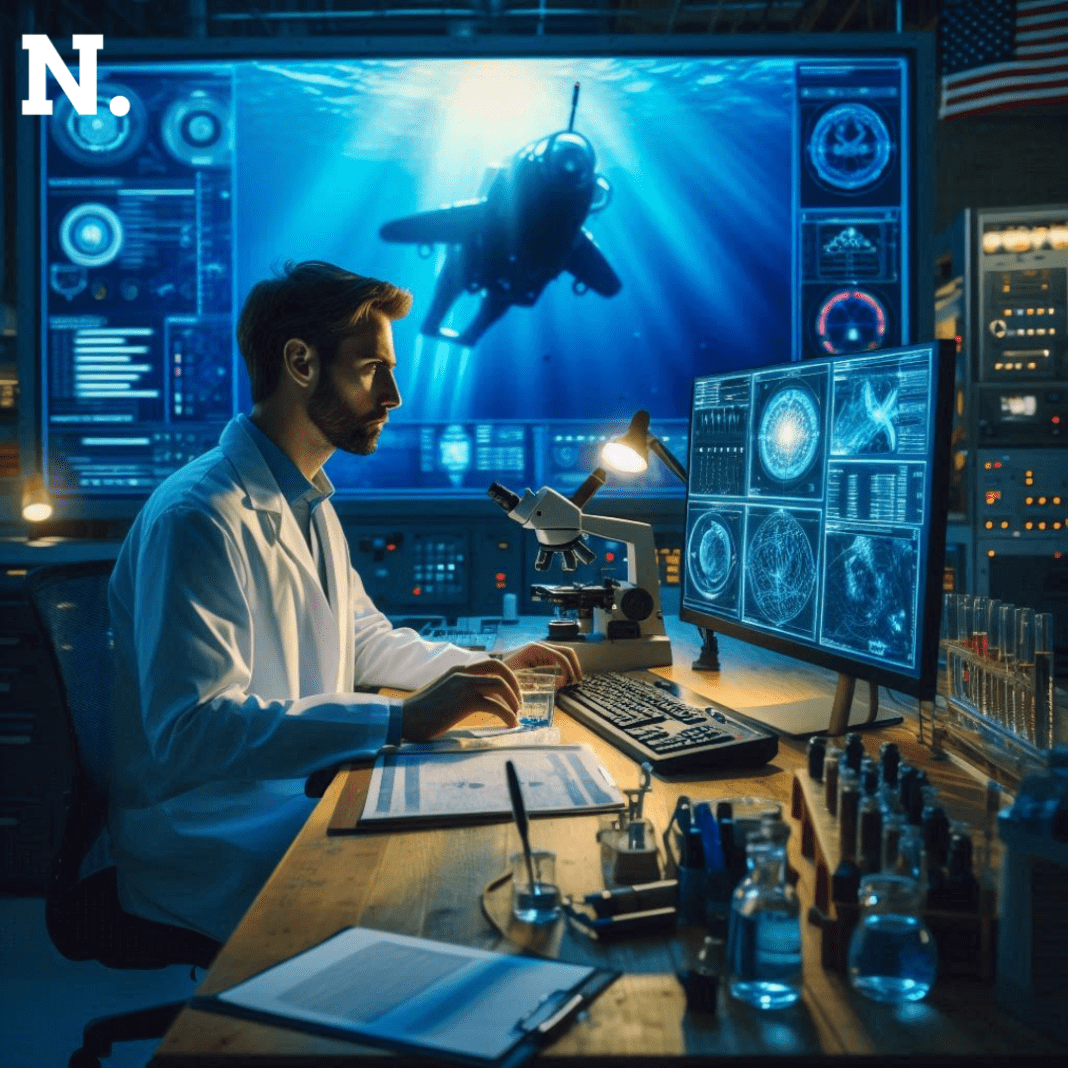The statement was issued at a time when the world has just unveiled the prototype infrastructure of the pioneering inertial Navy defence, powered by the latest artificial intelligence for underwater threat detection and neutralisation. Advanced system to form a key milestone towards the enrichment of security of the seas with its continual efforts made so far in safeguarding important naval vessels and strategic straits against various underwater threats. Integrated with the latest AI technologies, the Navy will more than triple its present capability for fast threat detection and neutralisation in an environment where speed allows it to be better prepared and more resilient against all types of threats that could possibly or actually occur at sea. The move looks set to introduce a new standard in underwater defence through ingenuity in safeguarding maritime interests.
AI-Driven Underwater Defense for Enhanced Navy Security
The growing nature of maritime activities is giving navies an increasing challenge because of advanced underwater threats, among them stealth submarines, autonomous underwater vehicles, and mines that are to be used in the future. These developments underline conventional surveillance method inadequacies and underline the pressing need for more evolved detection systems. Of the many solutions provided in return, the most important one would be the integration of artificial intelligence, allowing real-time processing of huge amounts of sensor data coming in for situational awareness and threat detection ahead of time. Only through that will naval forces achieve the capability to respond at an extraordinary pace to changing circumstances, increasing their effectiveness in ensuring maritime security by a quantum.
But more than this, integration of AI not only enhances capabilities of defence, but also makes possible autonomous systems that detect, on their own, threats underwater and neutralise them. With this development, very soon an intermediate arrangement in the form of constant surveillance with response features in the dynamic maritime environment will enhance the preparedness of any navy operating there. In this way, such AI-driven innovations can allow navies to assure better protection for their assets and sustain strategic superiority in the face of increasingly complex and stealthy maritime threats.
Advancing Naval Security with AI-Powered Threat Detection
This new Navy prototype uses state-of-the-art AI technologies for real-time identification and tracking of potential threats. With state-of-the-art machine learning algorithms, sonar data analysis, and autonomous underwater sensors, this system will be able to carry out anomaly and suspicious activity detection at an accuracy and speed previously unseen in the field.
At the core of the AI infrastructure are complex neural networks, trained on vast datasets of underwater acoustics and threat signatures. These networks identify benign underwater phenomena—marine life or harmless objects—and probable threats, such as hostile submarines or mines. Since it learns constantly from new data and adapts to it, this AI system’s ability to detect entities improves over time, ensuring it will be effective against new threats as they appear.
Benefits and Implications for Naval Operations
The benefits of integrating AI into underwater threat detection are many:
Higher Accuracy in Detection: Through machine learning and data fusion, the AI’s ability to make out threats against a background of noise would be more accurate than done by traditional methods, reducing false positives and false negatives.
The autonomous ability to coordinate responses, coupled with real-time data analysis, enables the Navy to quickly respond to threats and hence minimises damage.
Resource Efficiency: AI-driven systems can monitor wide areas with little human intervention, freeing naval personnel to do other critical tasks and hence reduce operational costs.
Adaptability With this continual learning set of capabilities, this system will continue to be proficient in countering new and evolving threats and provide longer-term security benefits.
Challenges and Future Prospects
Despite its exciting potential, the use of AI in underwater threat detection also comes with challenges. One major problem lies in ensuring that the developed algorithms for AI working in the diverse and dynamic underwater environment are robust and reliable. Another challenge was integrating AI systems with already existing naval infrastructure.
The Navy also has plans for further developing and enhancing the capabilities of its AI infrastructure in the future. Such efforts could involve additional, much more sophisticated threat-prediction models; various means of enabling interoperability with allied naval forces; and the integration of AI with other advanced technologies in realms like quantum sensing and blockchain for secure data transmission.
Conclusion : Navy’s AI Underwater Defense
It would be one of the gigantic leaps forward in maritime defence technology. That a US Navy AI prototype is under construction to detect underwater threats. In the increasingly competitive underwater environment. The Navy uses artificial intelligence to enhance its capability of protecting vital assets against security threats. This novel approach not only promises to bolster current defence strategies but looks forward to new challenges forthcoming with the evolution of technology. The Navy wants to continue refining its AI systems so that for many years into the future. It remains safe and strategically superior at sea, with agility and adaptability to the emergence of threats and operational demands in dynamic, maritime contexts.




